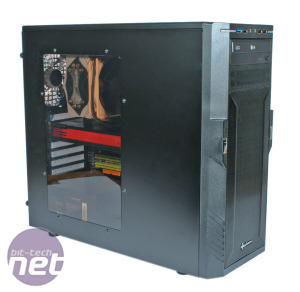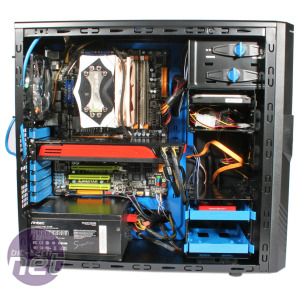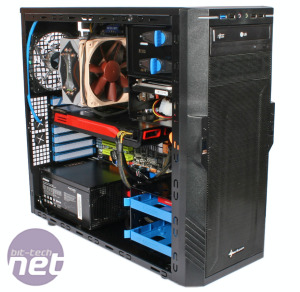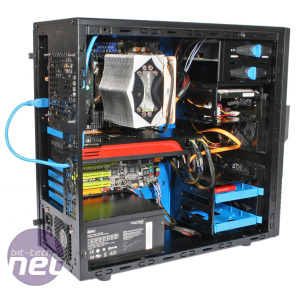
Performance Analysis
Cooling in the T28 is best described as sufficient. Despite two front intakes pulling cooler air into the case, it wasn’t enough to effectively cool our hot components. Although we didn’t encounter any instability during testing, the single exhaust fan still struggled to vent air once it had been heated. With the processor reaching a toasty CPU Delta T of 56°C, the T28 falls towards the bottom of our results tables.We weren't particularly surprised to see a similarly hot GPU Delta T of 46°C, as the side-oriented drive cages partially obscure airflow to the graphics card. With no side panel fan, there’s no way to improve airflow without removing the middle drive cage. Even then, the lack of an exhaust will prevent temperatures from dropping significantly.
As the front panel is almost entirely constructed of wire mesh, the T28 was rather loud – we could easily hear the graphics card over the case fans, even at 30% of its maximum speed, although the included fans are reasonably quiet themselves,
Conclusion
There’s little doubt that Sharkoon has prioritised styling with the T28. By colour-matching the LED fans with a painted motherboard tray, it certainly looks better than many budget cases, and the transparent side panel is a welcome inclusion if you want to show off your components, but other areas have taken a back seat.Build quality is distinctly average, with weak steel that flexes dramatically in places. Cooling is also basic, despite the presence of three fans – Antec’s One has a much better twin exhaust design that is better suited to cooling hot components, yet it costs around £5 less. When there are better built and designed cases available elsewhere, it’s difficult to recommend the T28, despite its aesthetic charms.
-
Value15 / 20
-
Design20 / 30
-
Features14 / 20
-
Cooling15 / 30


MSI MPG Velox 100R Chassis Review
October 14 2021 | 15:04












Want to comment? Please log in.